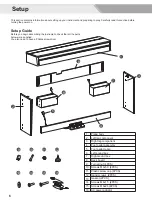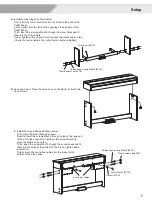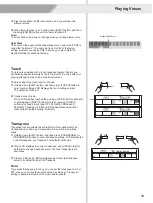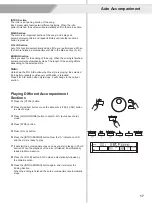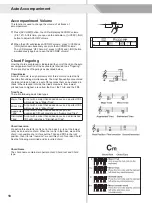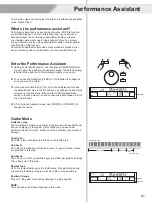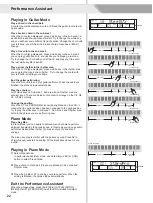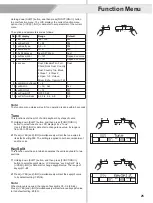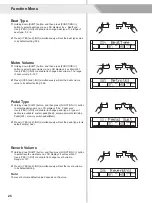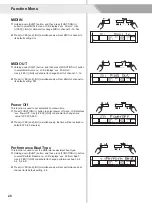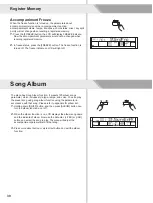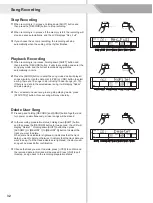
Auto Accompaniment
18
Accompaniment Volume
This function is used to change the volume of all tracks of
accompaniment.
1.
Press [ACCOMP] button, the LCD will display ACCOMP volume
(0 to 127). At this time, you can use the data dial, or [+/YES]/ [-/NO]
button to adjust ACCOMP volume.
2.
When the LCD will displays ACCOMP volume, press [+/YES] and
[-/NO] button simultaneously can mute the ACCOMP volume.
The LCD displays “OFF Accomp”. press [+/YES] and [-/NO] button
simultaneously again can open the ACCOMP volume.
Chord Fingering
How the chords are played or indicated with your left hand (in the auto
accompaniment section of the keyboard) is referred to as "fingering".
There are 2 types of fingerings as described below.
Chord Basics
A chord, in music, is any harmonic set of three or more notes that is
heard as if sounding simultaneously. The most frequently encountered
chords are triads. A triad is a set of three notes that can be stacked in
thirds. When stacked in thirds, the triad's members, from lowest
pitched tone to highest, are called: the Root, the Third, and the Fifth.
Triad Type
There are following basic triad types:
Accomp
Major
Triad
Minor
Triad
Augmented
Triad
Diminished
Triad
A
root
with
a
major
third
added
above
and
a
perfect fifth
will
consist
as
a
“
Major
Triad
”.
A
root
with
a
minor
third
added
above
and
a
perfect fifth
will
consist
as
a
“
Minor
Triad
”.
A
root
with
a
major
third
added
above
and
an
augmented
fifth
will
consist
as
an
“
Augmented
Triad
”.
A
root
with
a
minor
third
added
above
and
a
diminished
fifth
will
consist
as
a
“
Diminished
Triad
”.
Chord Inversion
We define this chord its root is not in the bass (i.e., is not the lowest
note) as an inversion chord. When the root is in the bass, we call the
chord: root-position chord. If we put the Third and Fifth in the root
position, then it forms “Inversion”, we call this chord “Inversion Chord”.
See the following major triad and its inverted chord.
Chord Name
The chord name contains two parts content: Chord root and Chord
type.



